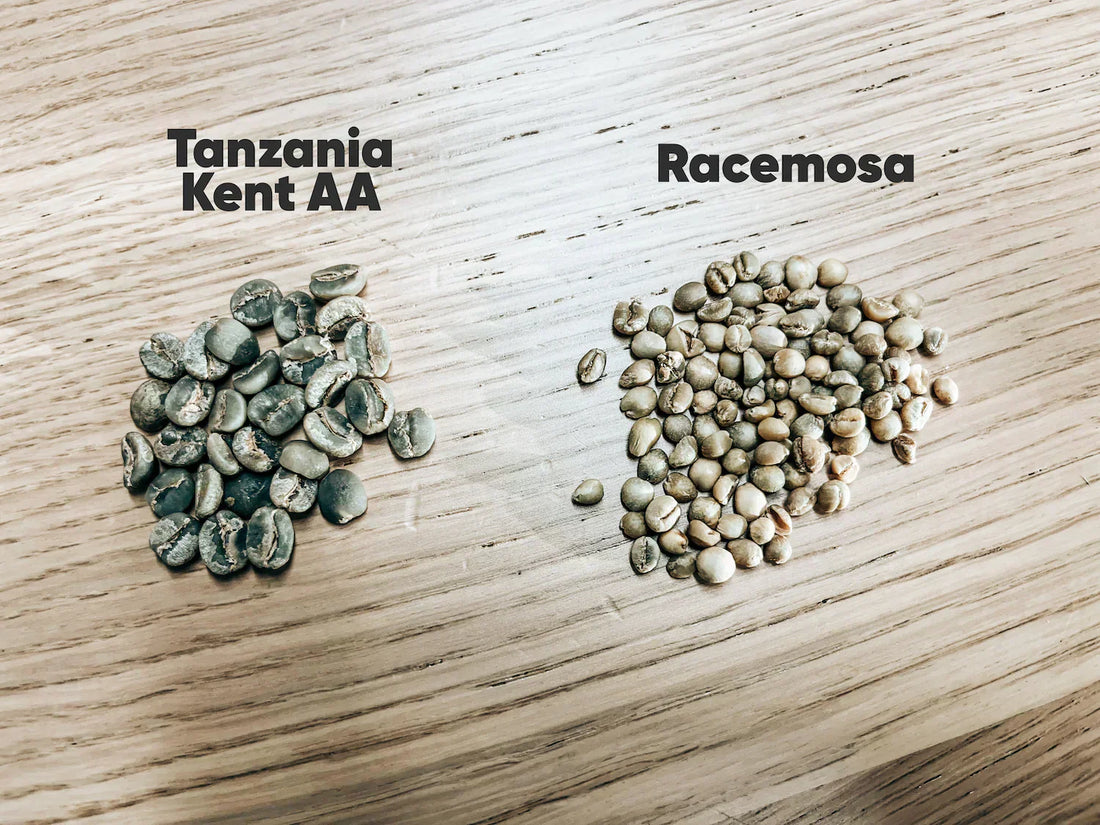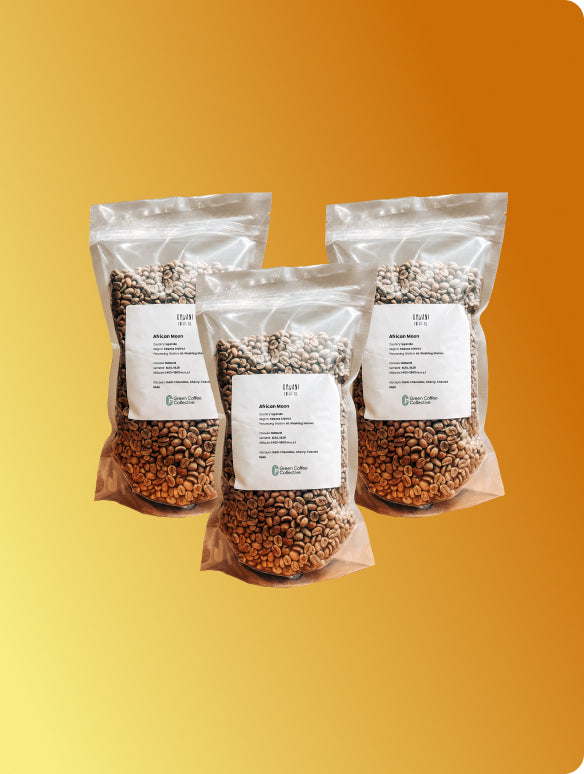What makes certain coffee varietals unique?
There are thousands of different coffee varietals being cultivated throughout the world, with new specimens being developed and researched every day. While there are many common varietals, there are some that are well-loved in the coffee world for their unique properties and rare status.
Many factors contribute to establishing a rare and unique identity for these lesser-known varietals. Some may be region-specific, while others require specific growing conditions and altitudes. Since these coffea species and varietals may require more precise growing conditions, their availability may be limited, resulting in a rarer reputation.
Other contributions to a rare and unique varietal can include their susceptibility or resistance to certain pests and diseases. One of the largest draws, however, is the complex and dynamic flavours, along with unique cup profiles that will be covered below.
Are unique coffee varietals better?
Within speciality markets, rare and unique varietals are prized for their limited status and offer unique and sweeter flavours.
This can make them appear better compared to more common varietals since they can offer a more distinctive coffee-drinking experience at premium costs.
How can I source unique coffee varietals?
The best way to source rare coffee varietals is through deep research into where the specific varietal is cultivated. If you are interested in sourcing any of these varietals, you should contact regions or farms that produce them, and start from there.
It is worth noting that their rarity can come at higher costs due to limited availability.
What is the rarest coffee varietal?
While many different varietals may be considered rare, one of the rarest is Racemosa. While technically a species of coffee (such as arabica or robusta), it holds a status more as a varietal.
Rare and Unique Coffee Varietals:
Ombligon
What is Ombligon coffee?
The Ombligon coffee varietal is a rare arabica crop mainly grown in Huila, Colombia. Its name is derived from the Spanish word for ‘belly button’ due to the unique shape of its coffee bean.
The exact origins of the Ombligon coffee varietal are unknown. It may be related to the Ethiopian heirloom varietal, but it also shares characteristics with Caturra crops, along with other native Colombian varietals. Some also believe it to be a natural mutation of either Pacamara, Bourbon, or Castillo varietals.
What are the traits of Ombligon coffee?
Physically, the crop has wide leaves which grow close together and branches that grow vertically. Its resistance to coffee leaf rust makes it an appealing varietal to cultivate in its growing regions.
The tree has a very high yield potential, along with large, dense coffee cherries. This density packs some well-loved flavours in the coffee. However, a lot of care needs to be taken during processing to ensure the uniquely shaped beans are not damaged. When roasting, the coffee needs a gentler approach, with a longer development phase to balance the acidity and bring out its sweetness.
How is Ombligon coffee grown?
Ombligon coffee grows best at altitudes of 1,600 - 1,800 masl. While it requires high altitudes, it is easy to grow within its ideal environment.
What makes Ombligon coffee special?
One of Ombligon’s biggest draws is its flavour. The varietal is renowned for its complex and sweet-tasting notes. You can expect Ombligon coffee to display flavours such as raspberries, guava jam, mango, and white chocolate, partnered with a silky and thick mouthfeel.
It has been rising in popularity over the last few years, and this is partially due to its presence in barista competitions. Its rarity is because it has only recently been discovered among speciality consuming cultures, so right now it currently sees limited production. There is no doubt that Ombligon has a lot of potential for more production over the next few years.
Racemosa
What is Racemosa coffee?
While it is technically a coffee species and not a varietal, Racemosa is considered one of the rarest coffees in the world. It only grows in a specific region of South Africa; along the coastal belt that encompasses KwaZulu-Natal, Zimbabwe, and Mozambique.
It was initially found growing as a wild plant and saw some cultivation during the 1800s. Production figures have been very slight until recently. Right now, local farmers are working hard to plant and cultivate a lot more Racemosa.
What are the traits of the Racemosa coffee?
The Racemosa coffee species is a relative and potential gene donor of both arabica and robusta varietals. As a coffee species, it differs dramatically from more well-known coffee varietals. One of its most standout traits is its naturally low caffeine content.
The tree can grow up to 3.5 m tall and it blooms sweetly scented pinkish white flowers. The coffee berries it produces are a near-spherical shape, and they take on a purple colour when ripe. Berries usually grow within 2-3 months, which is very quick compared to other varietals. However, the flip side to this short harvest is that yields are low compared to other coffee trees.
Racemosa’s traits are what makes it so unique. It has many resistances. Among these include coffee leaf rust and coffee leaf miner. It is also very resistant to drought, and high temperatures, and has low precipitation requirements.
How is Racemosa coffee grown?
Racemosa coffee only grows along the specific geography of the South African coastal belt. Due to its traits, however, it is remarkably easy to grow due to its hardy nature.
It requires a maximum altitude of 600 masl and needs very little precipitation. It can also grow in drought and sandy soils.
What makes Racemosa coffee special?
Racemosa is naturally low in caffeine and is very easy to grow within its geographical region. While its production is currently very limited, it has a strong potential within specialty coffee markets.
A cup of Racemosa coffee will offer slightly bitter and medicinal flavours. This is due to its terroir and low-altitude environment. Some other notes include a subtle smokiness with woody tones.
This rare and protected coffee species is one to look out for in the near future.
Sidra
What is the Sidra coffee varietal?
The Sidra coffee varietal (also known as Sydra or Bourbon Sidra) is a rare crop that has foggy origins. Some believe that it may have originated from the Pichincha province of Ecuador. It is genetically similar to Ethiopian heirloom coffee - which is a result of crossbreeding Typica and Bourbon varietals.
Some also believe that the crop originated from a Nestle breeding facility in the Pichincha province - by crossbreeding Typica and Bourbon. At some point, it was then introduced to the Ecuadorian coffee sector, where it was then disseminated throughout the wider coffee industry.
It is genetically similar to Ethiopian varietals, and now mainly grows in Ecuador and Colombia at heights between 1,650 and 1,800 masl.
What are the traits of the Sidra coffee varietal?
The tree itself has a distinctive thick trunk and grows up to 4 metres tall. Its foliage is dark green leaves, with distinctive 5 petal flowers and cherries that grow in dense bunches along the tree’s branches.
Its cherries are larger and rounder than typical arabica varietals - being similar to Gesha beans which display a longer and thinner shape.
Is capable of producing high yields. While it has some resistance to many pests and diseases, it is susceptible to both coffee leaf rust and coffee berry disease - so a lot of care needs to be taken when growing this varietal.
How is the Sidra coffee varietal grown?
One factor that makes Sidra so rare and unique is the fact that it requires shade-grown conditions to thrive. This can make it difficult to grow, and limits its area of planting - since it will not see any progress in sun-grown environments.
Since it cannot be sun-grown, Sidra coffee needs a shaded ecosystem to thrive.
What makes the Sidra coffee varietal special?
Since Sidra coffee needs a shaded ecosystem to thrive, it can absorb nutrients from surrounding crops and soil. It is these conditions that make the coffee special, while also enabling it to suit a variety of different processing methods.
Its unique properties and required ecosystem give the Sidra varietal dynamic and complex flavours that are botanical and herbal. Tasting notes can include nectarine, apricot, peach, orange blossom, and winey grape.
To get the best out of Sidra, it needs to be grown from 1,700 masl. However, a lot of care needs to be taken when cultivating this varietal since it is susceptible to crop diseases. Currently, Sidra's susceptibility limits its production potential, resulting in its rare status.
Regardless, there is a lot of potential for the complex and dynamic Sidra coffee over the coming years. It has a lot of potential on the market - especially among Middle Eastern and Western cultures who prefer sweeter coffee. In this regard, it has a similar standing to the renowned Gesha varietal.
Sources:
https://sucafina.com/na/news/can-varieties-protect-the-future-of-coffee
https://varieties.worldcoffeeresearch.org/arabica/varieties
https://perfectdailygrind.com/2023/08/what-is-ombligon-variety-coffee/
https://worldcoffeeresearch.org/programs/next-generation-f1-hybrid-varieties

